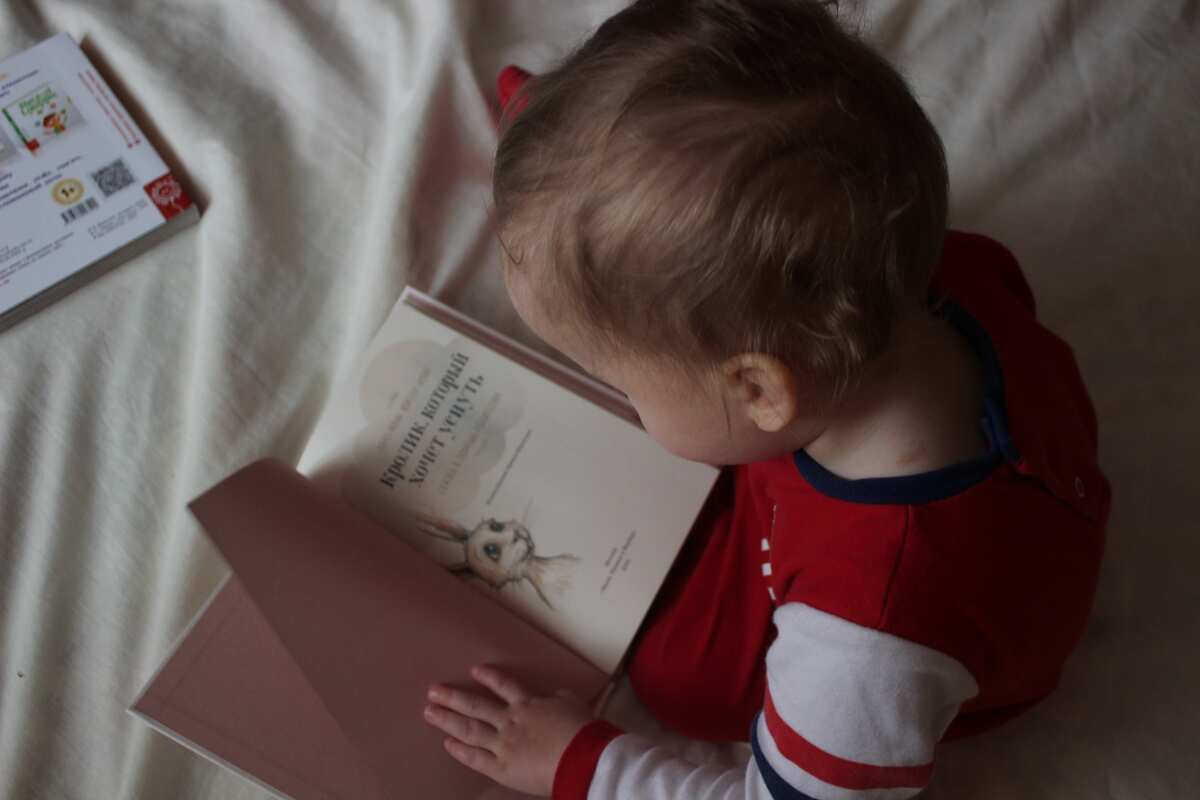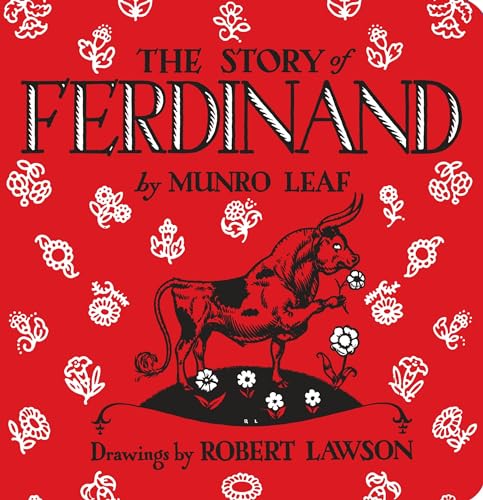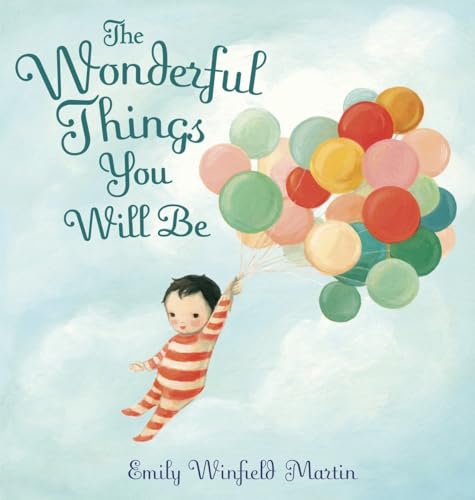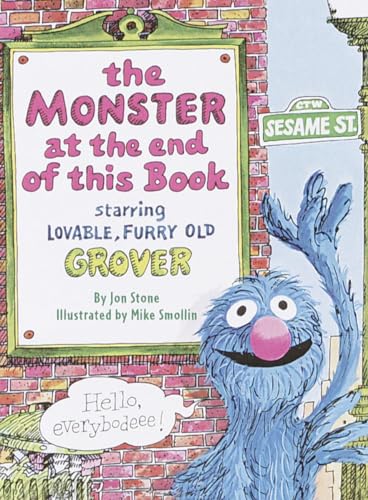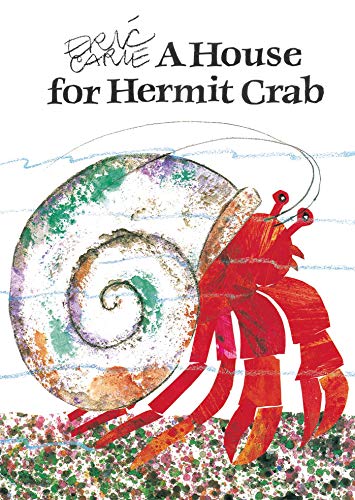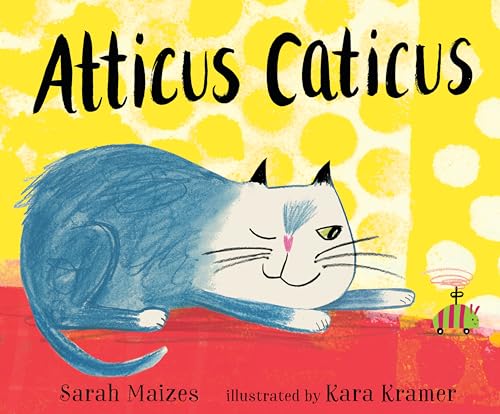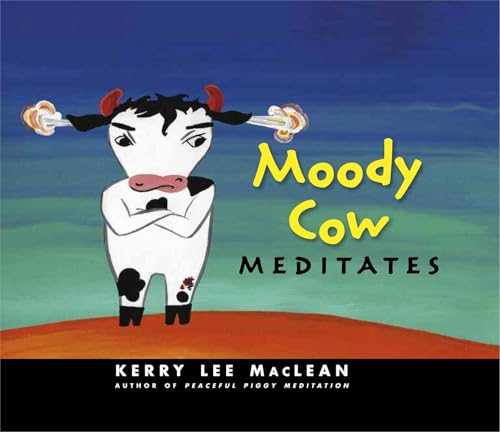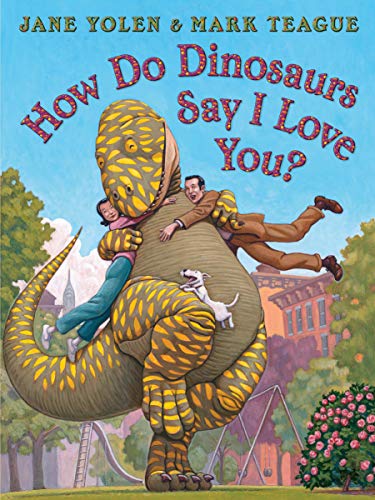As a parent, reading to your 3-year-old can have numerous benefits. It can be a bonding experience, as well as an opportunity to teach your child about storytelling and language. At three years old, children are beginning to understand more complex narratives and may be developing a love for books.
However, with so many books to choose from, it can be overwhelming to find the best ones for your child. That’s why we’ve compiled a list of some of the best books for 3-year-olds, to help you find the perfect story for your little one to enjoy.
In This Article
HappyBabyHub’s Best Books For 3-Year-Olds Picks
1. All by Myself (Little Critter)
In this timeless, amusing, and endearing book, Mercer Mayer’s Little Critter wants to demonstrate all the things he can accomplish for himself. Both parents and 3-year-olds will be able to identify with this well-known tale of a boy who struggles with simple tasks like tying his shoes, coloring a picture, and riding a bike. It is a wonderful technique to teach 3-year-olds independence.
2. The Story of Ferdinand
All the other bulls engage in fighting, running, jumping, and butting heads. Ferdinand, on the other hand, prefers to relax and enjoy the fragrance of the flowers. What then will happen if Ferdinand is chosen to participate in the bullfights in Madrid?
Since its initial publication in 1936, The Story of Ferdinand has moved, charmed, and stirred readers with its message of nonviolence and pacifism. During World War II, Adolf Hitler ordered the book to be destroyed in Nazi Germany, while Joseph Stalin, the Soviet Union’s leader, gave it special permission to be the only non-communist children’s book permitted in Poland.
Mahatma Gandhi, the foremost figure in Indian nationalism and civil rights, even referred to it as his favorite book. Gandhi’s peaceful and pacifist ways also served as an inspiration to civil rights activist Martin Luther King, Jr.
3. The Wonderful Things You Will Be
Emily Winfield Martin’s rhythmic poem reflects all the lovely things that parents think of when they gaze at their children, from courageous and daring to creative and intelligent. This book is one that families will enjoy reading often since it has lovely, lavish artwork and a spectacular gatefold that opens at the conclusion.
4. The Monster at the End of This Book
Grover wants you to continue reading since the book’s conclusion contains a monster. When he finds out that this book has a monster at the conclusion, sweet, elderly Grover is upset. He implores readers to refrain from turning the pages, but naturally, young readers are compelled to witness this monster for themselves. Grover is shocked to learn who the monster is at the conclusion of the book, and young children will love it too!
5. The Rainbow Fish
The rainbow fish is the most exquisite animal in the entire ocean because of its shimmering scales. But with time, it grows more and more alone, since it is also conceited and arrogant. Then it understands that charm alone won’t earn you friends. It gets over its ego and starts giving the other fish its glittering scales.
The book’s striking foil stamping, which glitters on every page, appeals to kids right away. But its lasting worth comes from the universal lesson at the center of this straightforward tale about a beautiful fish who learns to make friends by giving his most valued items.
6. Room on the Broom
This entertaining read-aloud for the whole family is a great way to kick off Halloween festivities and makes a great gift. From the authors of The Gruffalo, a charming tale of wit, friendship, and diversity!
The wind speeds up as the witch and her cat are merrily soaring through the air on a broomstick. The witch’s hat, bow, and wand are all blown away! The missing objects are fortunately discovered by three friendly animals, who only ask for a trip on the broom in exchange. But can all those buddies fit on the broom? Will they be able to protect the witch from a ravenous dragon when calamity strikes?
7. A House for Hermit Crab
Unlucky Hermit Crab! He discovers a larger shell for himself after outgrowing his little, cozy one, along with a great number of new buddies to furnish and guard his new home. But what will happen when he grows out of this shell and must bid farewell to all the aquatic life that has called Hermit Crab’s home? 3-year-olds who are going through a transition in their own lives will identify with Hermit Crab’s tale, and they will also gain a lot of knowledge about the wonderful world of marine life.
8. Atticus Caticus
An infectiously rhythmic read-aloud for cool cats of any kind follows the day in the life of a little boy’s pet cat. As a little child introduces us to his cherished (and instantly recognizable feline) cat, snap your fingers at the music. Atticus will capture your heart and perhaps encourage you to compose a few riffs of poetry about your own animal companions, whether he is lounging in the sun or sneaking a sip from a water bottle, filing his claws on a favorite chair or curling up for the night on his boy’s head.
9. Catch That Chicken!
The best chicken catcher in the entire community is Lami. No one is faster or braver than Lami when it comes to chickens, despite the fact that her sister may be quick at spelling, her friend may be quick at hair braiding, and her brother may be courageous around bulls. That is, until Lami chases a bit too quickly, climbs a little too high, and reaches a little too far one day. ouch!
With an ankle that is inflated like an enraged reptile, how is she supposed to capture chickens? Could it be that rapid thinking is more crucial than quick running, as Nana Nadia claims? Award-winning author Atinuke celebrates Nigerian rural life in a tale with a crucial lesson for all people that is vividly illustrated by Angela Brooksbank.
10. Guess How Much I Love You
Little Nutbrown Hare says, “Guess How Much I Love You.” Little Nutbrown Hare uses all of his reach and all of his hopping to show his father how much he loves him. He is also adored by Big Nutbrown Hare, who can reach farther and jump higher. If that’s the case, Little Nutbrown Hare loves him to the moon and back, but Big Nutbrown Hare loves him even more.
11. If Animals Kissed Good Night
How would things change if animals behaved the same way you do? The animals in this best-selling tale depict how they would bid their loved ones goodbye at night!
How would animals say good night if they kissed as we do? The movement of the giraffe and his calf were high-necked, the howls of the wolf and his pup could be heard, and the movement of the sloth and her young were incredibly slow. And each animal would express love in their own special way throughout the animal kingdom.
12. First the Egg
What came first, the egg or the chicken? The evolution of a seed into a flower, a tadpole into a frog, or a caterpillar into a butterfly is marvelously shown by simple die-cuts.
The well-known writer of “Black? White! Day or night? why Lemons Are Not Red” presents the ideas of change and creativity in a wholly original and fascinating way. 3-year-olds can flip through and turn the pages of this award-winning novel to see how a seed becomes a flower, a picture is painted, a word is turned into a tale, and the ordinary is transformed into the exceptional.
13. Llama Llama Red Pajama
Looking for a way to turn bedtime into a full-blown llama drama? Look no further than the beloved read-aloud “Llama Llama Red Pajama!” For over a decade, readers of all ages have been captivated by Llama Llama’s nighttime adventures, and now even the youngest readers can join in on the fun with this colorful board book version.
With Anna Dewdney’s catchy rhymes and expressive illustrations, your 3-year-old will be transported to a world where even the tiniest llama can have big emotions. And with Mama Llama’s soothing presence, your little one will learn the importance of comfort and security, making this book the perfect choice for a cozy bedtime read. So grab your copy and get ready for a llama-tastic adventure!
14. Grumpy Monkey
Get ready for a silly storytime with Jim the chimpanzee! This #1 New York Times bestseller is perfect for teaching your little ones about managing their emotions, especially as they prepare to go back to school.
Even though it’s a beautiful day, Jim the chimp is in a terrible mood for no apparent reason. His buddies try all sorts of things to cheer him up, but nothing seems to work. Jim even has a bit of a meltdown! But maybe it’s okay for him to have a bad day and feel his emotions.
This hilarious picture book by Suzanne and Max Lang brings a lighthearted touch to an important lesson in emotional intelligence. It’s a great way to show your 3-year-old that it’s okay to feel their feelings and how to deal with them.
15. Don’t Let the Pigeon Drive the Bus!
A highly unusual volunteer steps up to take the place of the bus driver when he takes a break from his route—a pigeon! But you’ve never encountered one quite like this. Children will enjoy being able to respond to him and choose his fate as he begs, wheedles, and pleads his way through the book. Popular cartoonist Mo Willems expertly depicts a preschooler’s rage in his humorous picture book debut.
16. Moody Cow Meditates
Do you want to support the kids in your life in learning how to be still, peaceful, confident, and resilient Through the disciplines of mindfulness and meditation, children may gain more joy and focus. Moody Cow Meditates is the ideal approach to expose them to these concepts. Children may learn about the benefits of meditation in a pleasant way thanks to this colorful and humorous children’s book.
The day is not going well for Peter the cow. He loses his temper and gets into trouble after missing the bus and falling off his bike. To make matters worse, all the other children are calling him “Moody Cow” and making fun of him. Peter’s day just seems to get worse until his grandfather visits and shows him a quick and enjoyable activity to help him calm down and let go of his stress.
17. Where Do Diggers Sleep at Night?
Toddlers who are fascinated by trucks will want to include tractors, fire trucks, and other construction-themed vehicles in their nightly sleep rituals! Find out what happens to the snowplows, dump trucks, enormous cranes, and other construction-related characters at night in this captivating novel.
The automobiles in this narrative get worn out after a long day of labor, just as you and I do, and need to calm down and get ready for beautiful dreams. When these trucks plead for one more tale while their parents sing them a goodnight song and put them to bed, young readers will undoubtedly be able to relate.
18. A is for Apple (Smart Kids Trace-and-Flip)
This cutting-edge, interactive trace-and-flip book includes flaps to lift, bold, colorful drawings, and letter tracks for children to trace with their fingers to learn how to make letters.
Children may learn letters and first words in a fun new way with the help of this distinctive, inventive trace-and-flip book! To discover the form of each capital letter, young readers can trace it by following the finger tracks.
Every durable board sheet features a colorful lift-the-flap that reveals a first word that starts with the highlighted letter. Caretakers are urged to assist youngsters in tracing each letter while they name and pronounce it, pointing to each picture as they read the words, and practicing hand-eye coordination by having them lift the flap on each page to reinforce learning.
19. How Do Dinosaurs Say I Love You?
There are a plethora of ways for moms and dads to show their little ones that they are cherished, and who better to teach this lesson than America’s beloved dinosaurs? This entertaining book is perfect for bedtime reading, sharing stories, or anytime snuggles. The message is clear: even when young dinos misbehave, they are still deeply loved.
The most effective method to demonstrate affection to your 3-year-old is through cuddles and smooches. This book is sure to make you chuckle as it follows parents dealing with the typical antics of youth.
20. Lost and Found
When a little boy discovers an unexpected guest at his doorstep – an abandoned penguin – he knows he has to do the right thing and return it to its rightful home. But the journey is far from easy, as they face treacherous storms and long, dark nights in his rowboat. To pass the time and keep their spirits up, the boy regales the penguin with tales of adventure.
Finally, after many trials and tribulations, they arrive at their destination. But instead of feeling overjoyed, both the boy and the penguin are overcome with sadness. It’s only then that the boy realizes the true reason for the penguin’s journey – it was simply lonely and searching for a friend. This heartwarming and delightful tale reminds us that even the smallest act of kindness can lead to the most unexpected and wonderful friendships.
How To Choose Books For 3-Year-Olds?
- Value: There are so many stories that children may enjoy, and it doesn’t take much to make them happy. If you read aloud with passion and intensity, you’ll probably find that your youngster is more engaged. Children will want to hear a tale told this way often because it brings the story to life for them.
- Illustrations: Look for books with vivid illustrations. Three-year-olds are drawn to bright, colorful pictures.
- Repetition: Select books with repetitive phrases. Repetition is key for helping 3-year-olds learn to read. Look for books with rhymes or refrains that your child can easily memorize.
- Theme: Avoid books that are too babyish. Three-year-olds are beginning to outgrow board books and simple picture books. By this age, they would be able to explore some books independently (1).
- Learning: Reading is enjoyable in so many different ways. Books can smuggle in so many teachable moments, such as describing emotions and discussing how to express them, recognizing shapes, letters, and numbers, or adhering to the sequencing in a tale that may turn into a lesson about what happens next.
What Reading Level Should A 3-Year-Old Be At?
The reading level a child should be at in Year 3 depends on many factors, including their age, ability, and how much they have been exposed to reading material. Generally, children at this age should be able to read simple stories and passages with ease and be able to understand most of the content (2). If a child is struggling with reading, it is important to get them to help so they can catch up to their peers.
Should My 3-Year-Old Be Reading?
While not every parent will agree, it’s beneficial for children to start reading around the age of three. This helps them develop important cognitive skills and broaden their vocabulary. If your child shows an interest in reading, there are many ways you can encourage them, such as reading aloud to them, letting them choose their own books, and providing a supportive environment at home.
Are Board Books Good For 3-Year-Olds?
Most 3-year-olds are able to use and enjoy board books. Board books are durable and easy for little hands to hold, which makes them ideal for active 3-year-olds. In addition, the simple stories and bright pictures in board books can help capture a 3-year-old’s attention
How Many Sight Words Should A 3-Year-Old Know?
According to a study by the National Institute for Literacy, the average 3-year-old knows about 300 words. However, sight words, or words that are recognized by sight rather than by sound, are a different story. The average 3-year-old knows about 40 sight words.
How Many Books Should A 3-Year-Old Read A Day?
There is no set number of books that a 3-year-old should read a day but 3-5 books a day is a good start. Try to encourage daily reading habits that can help support a love of reading and a strong literacy foundation. Additionally, try to make reading time a fun and enjoyable experience for your child, and allow them to choose books that they are interested in.
